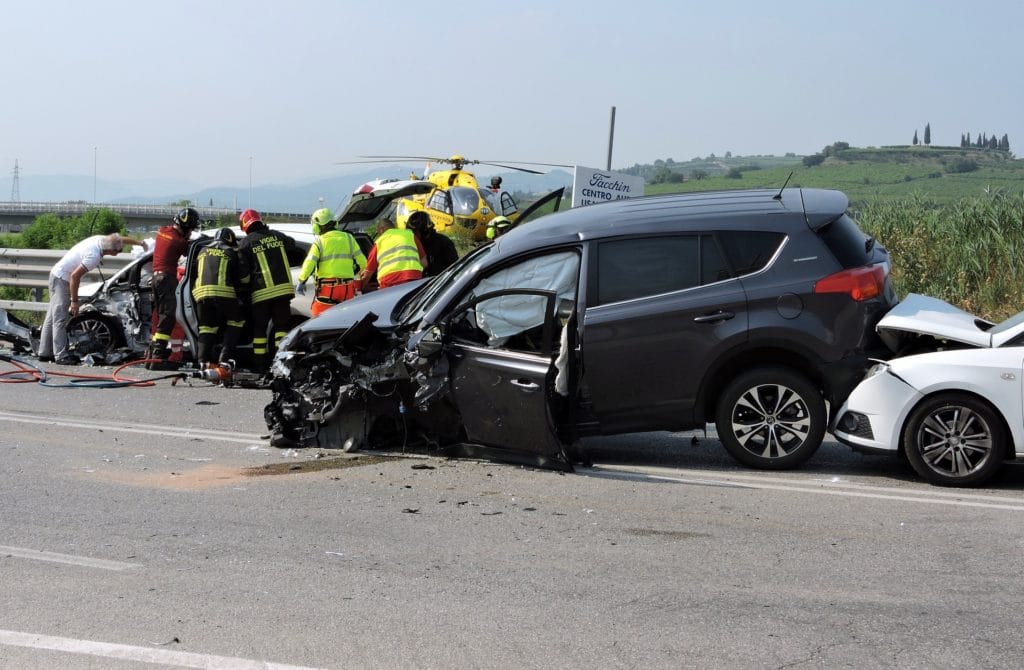What You Should Know About Teen Car Accidents And Injuries

Teenage drivers are involved in many car accidents in New York. These accidents may result from lack of experience, following other drivers too closely, failing to yield the right-of-way, failing to pay attention to the road, unsafe driving, and speeding.
Moreover, failure to properly use seatbelts causes serious injury or death for many teenage drivers. This is in spite of the law that mandates proper use of seatbelts while riding in a vehicle with a junior licensed driver.
The rate of teen car accidents is higher than that of any other age group according to the Centers for Disease Control and Prevention. Drivers between 16 and 19 years of age are at fault more frequently than older drivers with more experience. Teenagers might have less regard for the risk associated with a particular driver behavior or underestimate how long it takes to complete the maneuver.
They are also more likely to drive over speed limits and be distracted by conversations or texts. There is a higher chance that teenage drivers would disregard dangerous road conditions or fail to deal with them properly. The New York State Graduated Driver Licensing Law restricts unsupervised night driving for junior permit holders and junior licensed drivers.
Why Are Intersection Accidents So Common in New York?

Intersection accidents are extremely common in New York. Data shows that nearly 1/3rd of all motor vehicle accidents in the urban areas of the state take place at intersections. A vast majority of these accidents are caused by the negligence of motorists who fail to obey the rules of the road.
An intersection, due to the very nature of its design, is dangerous for pedestrians, bicyclists, as well as motorists. At a place where two or more roads intersect with each other, all it takes is the slightest bit of negligence or miscalculation on a driver’s part to cause an accident.
What You Should Know About Shoulder of The Road Accidents in New York

While driving in New York, you might find yourself in a situation that calls for pulling over to the shoulder of the road. It might seem safe to do. However, it is one of the places on the road that is most fraught with danger.
For this reason, this step should only be taken in emergency situations when there are no other options. Statistics can clearly show the dangers of pulling off of the road, even in emergencies. The shoulder of the road is the place where more than 1,500 people get injured or killed annually.
Due to the dangers of this maneuver, determining liability can be complicated. It might be possible that a driver, while trying to pull over onto the shoulder, does not pull over far enough and obstructs the nearest lane.
This can dramatically increase the chance of an accident. Since oncoming cars can easily confuse vehicles on the shoulder as vehicles in a different lane, the probability of accidents can definitely increase. Often, this results in a crash.
Non-Flame Burn Events
We tend to think of burns as something that can occur due to a fire but may be avoided by staying away from an open flame and avoiding potential harm. However, many burn injuries do not involve contact with open flames. In fact, some people may not even realize that skin actually burns more quickly when applied to hot surfaces than it does in most open flames. So what really causes the average burn scenario? Having knowledge of the different types of common burn events will help injury victims to understand why these types of accidents happen and how they can be avoided.
What is the Statute of Limitations in Medical Malpractice?

The statute of limitations is the part of the law that sets the maximum time in which a person or an entity can initiate legal proceedings from the date of the alleged offense. These times differ between states and between the different areas of law. This period usually depends on the nature of the offense, thus in the context of medical malpractice, the statute of limitations refers to how long you have from sustaining your injury (due to malpractice) to filing a medical malpractice lawsuit.
Did Astronaut Neil Armstrong Die a Wrongful Death?

While a nation mourned the loss of a national hero in 2012, Neil Armstrong’s family were querying incompetent post-surgical care at Mercy Health – Fairfield Hospital in Cincinnati that they believe lead to his untimely and wrongful death.
Even though Mercy Health – Fairfield Hospital defended their care, they paid the Armstrong family $6 million to privately settle the matter to avoid bad publicity via a medical malpractice lawsuit– a controversial yet common practice.
New Jersey Dentist Suspended After Causing Patient’s Wrongful Death

A New Jersey oral surgeon agreed to a five-year license suspension and approximately $300,000 in penalties after failing to adhere to correct infection control protocols that resulted in the wrongful death of one patient and injury to 14 others.
While medical malpractice lawsuits against dentists are rarer than that of doctors, they certainly do happen and can be just as debilitating when they do.
Hospital Negligence Killed a Baby at Seattle Children’s Hospital
The death of a child in hospital is something that is dreaded by all hospital staff, yet it is a tragedy that occurred at Seattle Children’s Hospital in February 2020.
A 5-month-old baby named Elizabeth Vera Hutt died after contracting a mold infection from the hospital. She was born in August 2019 with a congenital heart condition and had to undergo many surgeries. What her parents didn’t know was that the hospital had closed four operating rooms on 18 May 2019 and another ten on 24 May 2019 after Aspergillus – a type of mold – was found during a routine air check. While the mold is relatively harmless to the ordinary person, it can be deadly if the spores take root in people with fragile immune systems.
Has Delayed Diagnosis of Your Cancer in New York City Put You at Higher Risk?
According to estimates, 1,735,350 new cancer cases were diagnosed in 2018 in the US, and 609,640 people succumbed to the disease. Cancer has an average five-year survival rate of nearly 60 percent, but that differs significantly depending on the form of cancer. In general, the chances of survival are higher if the cancer is diagnosed and treated early.
Unreasonable delays in cancer diagnosis are grounds for a medical malpractice claim. But malpractice cases are complex, and there are various roadblocks that you need to identify and overcome to be able to create a solid case for damages.
Misdiagnosis is the Most Frequent Medical Error
According to researchers from Johns Hopkins Medicine in Baltimore, MD, diagnostic mistakes are the most frequent, and most serious, medical error that occurs, and the one which leads to the most medical malpractice lawsuits.
There aren’t exact values as to how many patients are affected, but it‘s estimated that between 40,000 and 80,000 deaths happen in United States hospitals each year. Because of these high values, the Johns Hopkins researchers studied over 11,000 cases from a U.S. medical malpractice claims database to understand which conditions doctors are most likely to misdiagnose.
